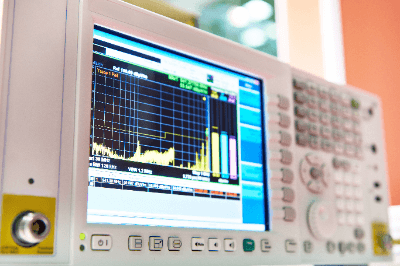What Is an EMC/RFI Tester?

An EMC/RFI tester is a piece of equipment used to perform EMC testing. Let us first explain what EMC stands for.
EMC stands for “electromagnetic compatibility.” In Japanese, it is translated as “電磁両立性 (denji ryōritsu-sei).”
In essence, EMC refers to an electronic device’s ability to coexist without interference from electromagnetic noise it emits and its ability to resist external electromagnetic interference. The noise emitted is considered as “emission,” while the device’s capability to withstand external noise is called “immunity.”
For manufacturers aiming to sell electronic products worldwide, compliance with EMC standards is crucial, as they must meet the regulations of individual countries, often based on laws like the Electrical Appliance and Material Safety Law in Japan and IEC standards in other nations.
EMC testing comprises emission tests to measure the noise levels generated by electronic equipment and immunity tests to assess the equipment’s resistance to external noise.
EMC/RFI testers are employed to conduct these tests.
Uses of EMC/RFI Testers
As previously explained, various types of equipment are used to measure the noise generated by electronic equipment or apply noise to electronic equipment.
This noise measurement or application is performed in an anechoic chamber, a testing environment designed to completely block radio waves. Since official certification is required for these testing laboratories, their availability is limited.
Moreover, the cost associated with certification testing in these specialized laboratories is typically several hundred thousand yen per day. Longer testing times result in higher expenses, posing challenges for electronic equipment manufacturers during development.
Principles of EMC/RFI Testers
As mentioned earlier, EMC testing includes emission tests to evaluate the noise levels generated by electronic equipment and immunity tests to assess noise resistance.
There are two types of emission (noise generation) test methods for electronic equipment: conducted emissions and radiated emissions.
Conducted emissions measure the noise generated by electronic equipment using a specialized noise measurement device known as a LISN (Line Impedance Stabilization Network). Radiated emissions measure the noise received by an antenna. Naturally, these tests are conducted in locations where external noise is entirely blocked out, making the measurement system for these emission testers extensive, including the testing environment.
Next, we will explain immunity testing, where external noise is applied to assess equipment immunity.
The primary types of immunity testing include static electricity tests, square wave impulse noise tests, fast transient burst tests for noise generated by switches and other switchgear, lightning surge tests, and power voltage fluctuation tests (also known as sag or dip tests), among other specialized testing procedures. During these tests, the Equipment Under Test (EUT) is exposed to noise to verify if it can withstand the specified levels.
Only products that successfully pass these EMC tests, conducted with the assistance of EMC/RFI testers, can be officially sold in the market and obtain certifications such as CE marking for Europe.